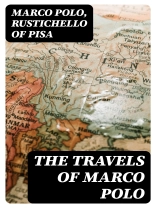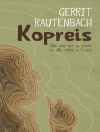The Travels of Marco Polo is a masterful anthology of medieval travel literature that immerses readers in the vast, culturally rich tapestry of the 13th-century world. This collection encompasses a remarkable range of literary styles, from detailed observations of geography and culture to evocative narratives that capture the spirit of adventure and discovery. Within its pages, readers will encounter vivid descriptions of exotic lands, diverse peoples, and intriguing customs, offering a comprehensive exploration of historical curiosity and the unrelenting human quest for knowledge. The anthology stands out not only for its breadth of content but also for its eloquent blend of documentation and storytelling, which has enthralled generations of readers. The compilers of this remarkable volume, Marco Polo and Rustichello of Pisa, were pivotal figures in bridging the worlds of East and West. Marco Polo’s firsthand accounts, coupled with Rustichello’s narrative prowess, provide a rich tapestry of insights into the socio-cultural and economic dynamics of the time. Their works collectively align with the broader historical theme of exploration and discovery, echoing the curiosity and wonder of the Age of Exploration. By capturing voices from different corners of the world, this anthology enriches our understanding of the intercultural exchanges and historical contexts that shaped medieval perceptions. This anthology offers readers an unparalleled journey through a world of discovery, offering insights into diverse perspectives, styles, and themes. A must-read for scholars and enthusiasts of history and literature alike, The Travels of Marco Polo promises an educational and contemplative experience, fostering dialogue between past and present. It is a testament to the power of human curiosity and the enduring legacy of travel narratives in expanding our horizons and deepening our appreciation for cultural diversity.
About the author
Marco Polo, a name synonymous with adventure and exploration, earned his renown through an extraordinary journey across the medieval world. Born around 1254 in the Venetian Republic, he is celebrated for his extensive travels to the Far East and notably to the court of Kublai Khan, the Mongol emperor. His travels lasted for 24 years, wherein he immersed himself in diverse cultures, witnessing and participating in the richness of the 13th-century Asian continent. Marco Polo’s most famous literary contribution, ‘The Travels of Marco Polo’ also known as ‘Il Milione’ or ‘The Million’, regarded as a seminal text in the annals of travel literature, provides vivid descriptions of his odyssey, ranging from geography and cultures to the various governance and economic systems of the time. His narrative, co-authored with Rustichello da Pisa while imprisoned in Genoa, is deemed not purely academic in its literary style, but rather a compelling blend of factual observations embellished with anecdotes, some factual and others dubious. Despite this, Polo’s account has been instrumental in shaping Europe’s understanding of the Eastern world and has inspired countless explorers. His work’s value, surviving skepticism and the erosion of time, lies not only as a historical document but also as a source of inspiration for the power of curiosity and the spirit of exploration.












